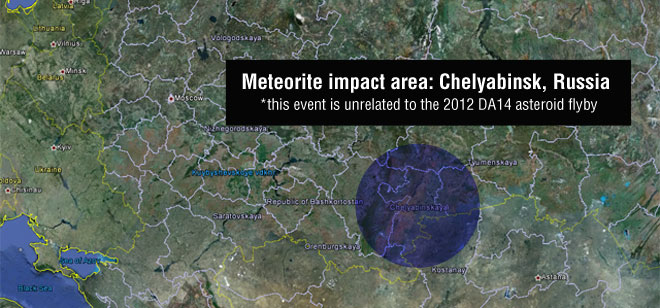NASA Needs Help to Hunt City-Destroying Asteroids, Congress Says

It is time for the private sector to aid in the search for potentially city-destroying asteroids and meteors, lawmakers said during a hearing Wednesday (April 10).
The House Committee on Science, Space and Technology made the call while hearing from NASA scientists and private-sector asteroid hunters during a hearing entitled "Threats from Space," with both groups agreeing that something more needs to be done.
"Detecting asteroids should not be the primary mission of NASA," Rep. Lamar Smith (R-Texas), chairman of the House Committee on Science, Space and Technology, said at the hearing. "No doubt the private sector will play an important role as well. We must better recognize what the private sector can do to aid our efforts to protect the world." [Meteor Streaks over Russia, Explodes (Photos)]
The meeting Wednesday was the second of three aimed at understanding the threat to Earth posed by asteroids in space. The first hearing took place in late March, and addressed the ways governmental entities, like NASA and the Air Force, are mitigating the risks posed by close-flying space rocks. The meetings were scheduled in response to a surprise meteor explosion over Russia and the close flyby of asteroid 2012 DA14 — both of which occurred on Feb. 15.
Astronomers have mapped the orbits of more than 90 percent of the potentially world-ending asteroids in close proximity to the Earth; however, tracking anything smaller than 0.6 miles (1 kilometer) in diameter is more difficult, said Ed Lu, the CEO of the B612 Foundation, a nonprofit organization in the early stages of building a near-Earth-object-hunting space telescope scheduled for launch in 2018.
"NASA has not even come close to finding and tracking the 1 million smaller asteroids that might only just wipe out a city, or perhaps collapse the world economy if they hit in the wrong place," Lu said at the hearing.
B612's space telescope, dubbed Sentinel, will be built to aid in the search for smaller asteroids near Earth. Less than 10 percent of asteroids measuring around 459 feet (140 meters) in diameter have been found, while only 1 percent of all asteroids measuring around 131 feet (40 meters) — or "city killer" range — have been tracked, Lu said.
Get the Space.com Newsletter
Breaking space news, the latest updates on rocket launches, skywatching events and more!
These city-destroying asteroids are notoriously difficult to track with the ground-based methods used by NASA today because the space rocks are relatively small and dark, said Don Yeomans, the head of NASA's Near-Earth Object Program.
"A dramatic increase in near-Earth asteroid-discovery efficiencies is achievable using space-based infrared telescopes," Yeomans said at the hearing.
Searching for space rocks in infrared light — as the $240 million Sentinel is expected to do — could allow astronomers to find a larger number of smaller objects that are too dark to be seen in visible light, Yeomans said.
A space-based asteroid hunter is also helpful because it can seek out space rocks at all hours of the day, as opposed to just at night, Yeomans added.

At the moment, we have the technology to deflect an asteroid, but scientists won't be able to use those methods without ample time to implement them, Michael A'Hearn, an astronomer working with the National Research Council, said at the hearing.
But first, the asteroids have to be found, Lu said.
"You can't deflect an asteroid that you haven't yet tracked," Lu said. "Our technology is useless against something we haven't yet found."
Follow Miriam Kramer @mirikramer and Google+. Follow us @Spacedotcom, Facebook and Google+. Original article on SPACE.com.
Join our Space Forums to keep talking space on the latest missions, night sky and more! And if you have a news tip, correction or comment, let us know at: community@space.com.

Miriam Kramer joined Space.com as a Staff Writer in December 2012. Since then, she has floated in weightlessness on a zero-gravity flight, felt the pull of 4-Gs in a trainer aircraft and watched rockets soar into space from Florida and Virginia. She also served as Space.com's lead space entertainment reporter, and enjoys all aspects of space news, astronomy and commercial spaceflight. Miriam has also presented space stories during live interviews with Fox News and other TV and radio outlets. She originally hails from Knoxville, Tennessee where she and her family would take trips to dark spots on the outskirts of town to watch meteor showers every year. She loves to travel and one day hopes to see the northern lights in person. Miriam is currently a space reporter with Axios, writing the Axios Space newsletter. You can follow Miriam on Twitter.









